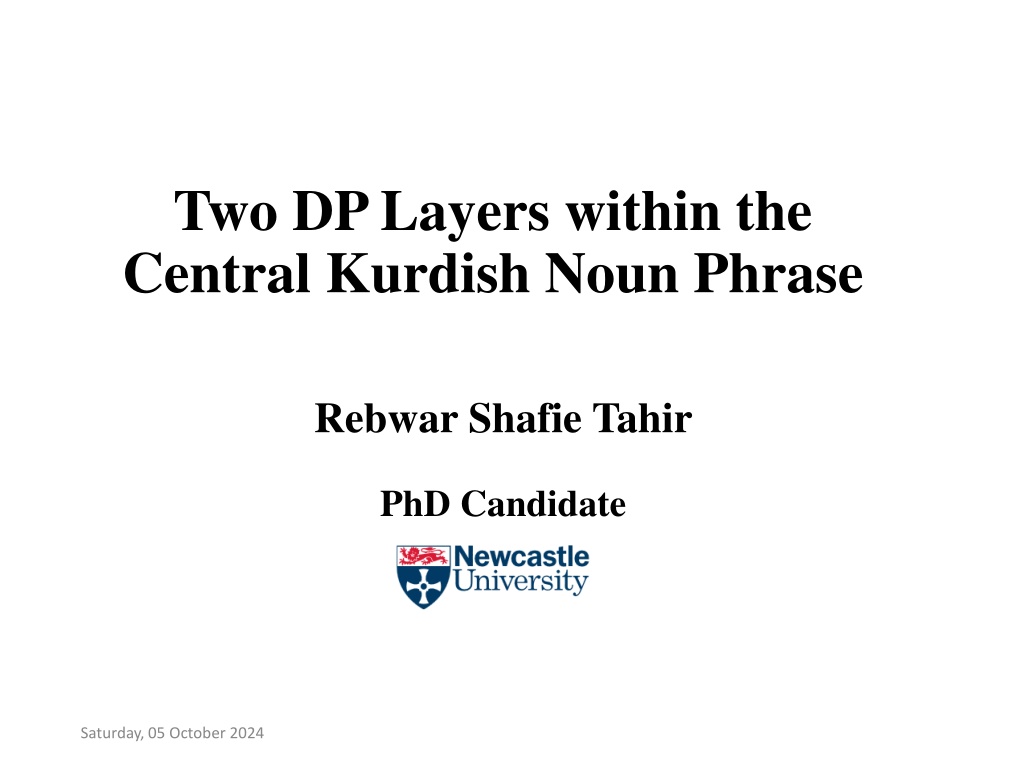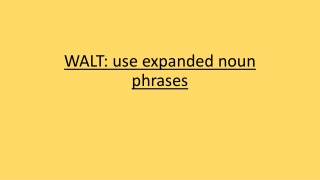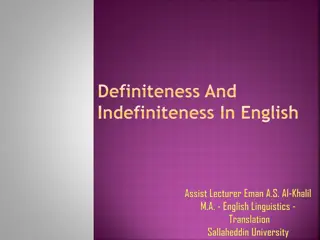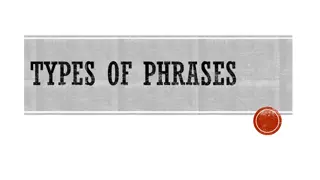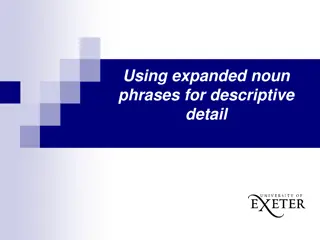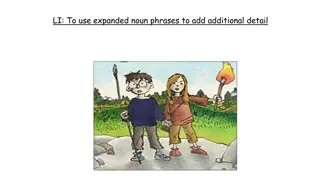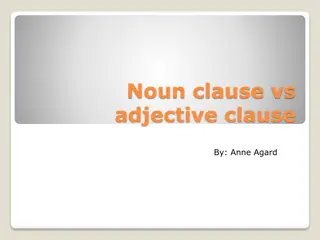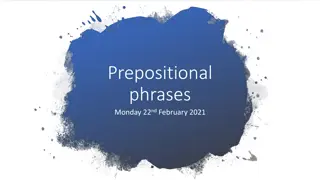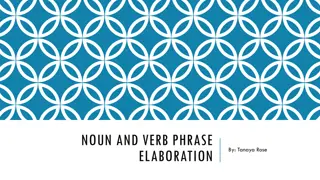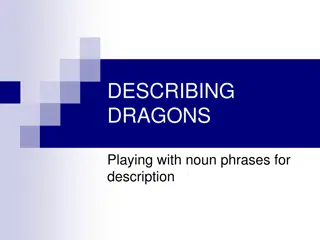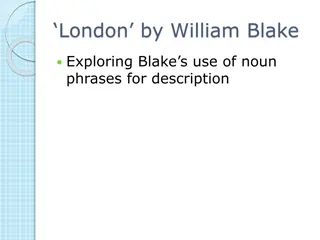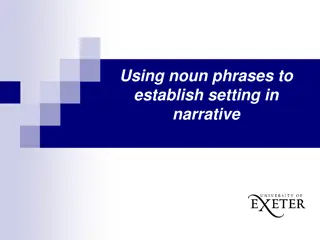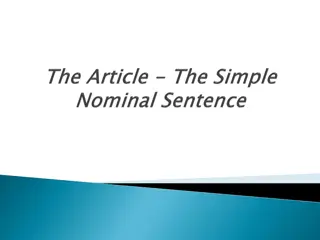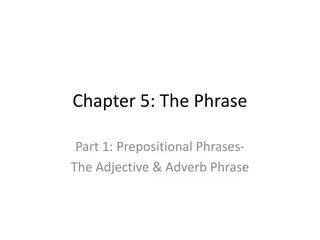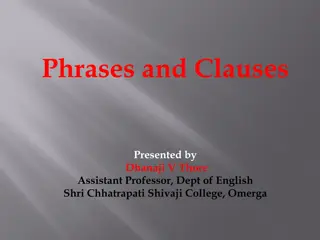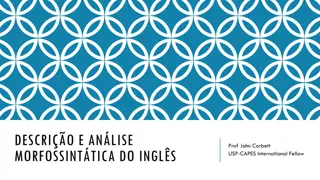Understanding Definiteness in Central Kurdish Noun Phrases
The exploration of two DP layers within the Central Kurdish noun phrase reveals the application of functional elements to express definiteness. Examining the role of D-category and the morpheme -e sheds light on the markers of definiteness in CK, providing insights into prenominal demonstratives and interrogative quantifiers.
Download Presentation

Please find below an Image/Link to download the presentation.
The content on the website is provided AS IS for your information and personal use only. It may not be sold, licensed, or shared on other websites without obtaining consent from the author. Download presentation by click this link. If you encounter any issues during the download, it is possible that the publisher has removed the file from their server.
E N D
Presentation Transcript
Two DP Layers within the Central Kurdish Noun Phrase Rebwar Shafie Tahir PhD Candidate Saturday, 05 October 2024
From NP to DP: Some theoretical background Early stages of Generative Grammar: A noun phrase is the projection of the head noun, whereas other accompanying elements such as articles, determiners and adjectives are modifying elements (see Jackendoff 1977). Abney s (1987) DP Hypothesis: A noun phrase is headed by a functional category realized by a determiner (D) with NP as its complement. Functional heads following DP Hypothesis: Any lexical or inflectional category which has a grammatical function and provides semantic content is the head of a maximal projection (Chomsky 1995). Saturday, 05 October 2024
The Noun Phrase in CK Functional elements to express (in)definiteness in Central Kurdish (CK, henceforth). (1) esp-eke (2) esp-e zil-eke horse-DEF thehorse horse-IZ big-DEF the big horse (3) esp- k (4) esp- k-i zil horse-INDEF ahorse horse-INDEF-IZ big a big horse ekein Hawrami is regarded as head of DP (Holmberg and Odden 2004, 2008). The D category in CK is associated only with (in)definiteness features. Saturday, 05 October 2024
Definiteness and the status of the morpheme -e Demonstratives are accompanied by the clitic e attaching to the noun or to the end of postnominal modifier(s). (5) em pyaw-e (6) ew pyaw-e pir-e this man-DEF thisman that man-IZ old-DEF that old man Previous assumptions about -e -eis part of the prenominal demonstrative article (Fattah 1997: 181 and pengin 2013: 107) My assumption eis a marker of definiteness and the prenominal part marks the deictic feature. Saturday, 05 October 2024
Evidence that e is a definite marker: In a narrative, a noun can carry the inflection -e (7) in- k ra-y de-kird berew me legel du woman-INDEF way-3SG PROG-make.PST towards us with two mindal-eke-i, in-e hawar-i de-kird bo yarmeti child-DEF-3SG woman-DEF shout-3SG PROG-make.PST for help A woman was running towards us with her two kids; the woman was calling for help. kam which and i what The interrogative quantifier which marks definiteness, while what indicates indefiniteness (Pesetsky 1987, 2000; Gebhardt 2009). (8) kam s w-e? (9) i s w- k ? which apple-DEF which apple? what apple-INDEF what apple? Saturday, 05 October 2024
The quantifier herany/each The quantifier each encodes definiteness or specificity, while any expresses indefiniteness (Beghelli and Stowell 1997; Giannakidou 1998, 1999, 2004; Vendler 1962: 157-159). (9) ba her kes-e s w- k ber- t. let each person-DEF apple-INDEF take.subju-3SG Let each person (of them) take an apple. (10) her kes- k hat bo re yarmeti bi-de any person-INDEF come.PST to here help IMP-give.1SG Help any anybody who comes here. Saturday, 05 October 2024
The demonstratives can occur without e, where the relevant nominal construction is devoid of any sense of definiteness. (11) swalker-eke deger- t le em ma (*-e) bo ew ma (*-e). beggar-DEF roam.PRS-3SG from this house(*DEF) to that house The beggar goes from one house to another. Vocative constructions are standardly considered definite (Lyons 1999: 152). (12) daik-e mother-V(DEF) you, mummy (13) kurd-in-e kurd-PL-V(DEF) you, Kurds Saturday, 05 October 2024
Cross-linguistic evidence of definite markers accompanying demonstratives is found in several languages including Romanian, Macedonian, Hungarian, Bulgarian, Indonesian, Irish, Spanish and Greek. (14) toj covek-ot Macedonian this man-the this man Giusti (1992: 7) (15) tazi kniga-ta colloquial Bulgarian this book-the this book Franks (2001: 19) (16) aftos o andras Greek this the man this man Panagiotidis (2000: 718) Thus, apart from the indefinite marker - k, CK has two markers of definiteness: eke and e. Saturday, 05 October 2024
Question: Are the (in)definite markers all realized by the same D category? Answer: Given the surface order inside the DP, the answer is negative. (17) esp-eke-an (18) esp-e zil-eke-an horse-DEF-PL horse-IZ big-DEF-PL the horses the big horses (19) ew esp-an-e (20) ew esp-e zil-an-e that horse-PL-DEF that esp-IZ big-PL-DEF those horses those big horses Number projects a phrase (see Ritter 1991, 1992, 1995) -an is the Num head of a functional projection (NumP). The two definite markers appear in different positions : eke precedes an, whereas e follows it. If DP is realized by discourse-related functional elements, CK should have two DP layers with NumP intermediate between them. Saturday, 05 October 2024
Theoretical background and assumptions A non-lexicalist approach: Nouns enter the derivation from the lexicon as bare stems. If a noun appears with inflectional elements, it must have received these inflections in the derivation (Baker 1988; Cinque 1999; Julien 2002, Marantz 1997). The LCA (Kayne 1994) Phrases with head-final order are derived by movement of the complement to a position asymmetrically c-commanding the head. Since the noun s w apple in (17) appears before the functional inflections, it must be in a derived position. Saturday, 05 October 2024
Based on Chomskys (1995) minimalist derivational theory, the structure for the noun phrases in (21) and (2) are as represented in (23) and (24), respectively. (21) s w-ek-an (22) ew s w-an-e apple-DEF-PL that apple-PL-DEF theapples thoseapples (23) (24) NumP DP DP NumP D NumP Num DP -e NumP -an DP Num NP D NP -an DemP NP -eke s w ew s w The noun phrase in (21) projects a DP contained by the projection of Number (23), that in (22) projects a DP which contains NumP (24). Saturday, 05 October 2024
Position of demonstratives: Demonstratives merge somewhere lower than definite article (Biberauer et al. 2014; Roberts 2011; Guardiano 2010). Motivation for NP movement: If movement is always triggered by some feature (Chomsky 2000, 2001, 2008), D and Num should carry an EPP feature. Purely syntactic features that trigger movement are widely supported in recent literature (Biberauer et al. 2014; Pesetsky and Torrego 2001; Roberts and Roussou 2003). Linearization movement Drawing on the LCA, Biberauer et al. (2014) argue that the head of a head-final construction bears a movement triggering feature moving the sister of the head to the specifier of that head. Saturday, 05 October 2024
Questions about two D categories: Why two DPs? Does the difference in the structure indicate a difference between the feature make-up of the two D categories? Could one D position encode some feature not shared by the other D? Where is k realized? Saturday, 05 October 2024
The two D positions: Definiteness: the grammaticalization of specificity and uniqueness (En 1991; Lyons 1999). Uniqueness: the referent is familiar to the speaker and the hearer (Anderssen 2007: 255). Specificity: the referent familiar to the speaker, but not (necessarily) to the hearer (Anderssen 2007: 255). My proposal The lower D position realized by eke is the locus of definiteness proper entailing both specificity and uniqueness. The higher D spelled out by e encodes the single feature of specificity subsumed under definiteness. Saturday, 05 October 2024
In possessive constructions -eke denotes definiteness, while e encodes specificity. (25) kur-eke-m naw-i Azad-e. boy-DEF-1SG name-3SG Azad-AUX.PRS My son s name is Azad. (26) ew kur-e-m naw-i Azad-e that boy-DEF-1SG name-3SG Azad-AUX.PRS That son of mine s name is Azad. The DP kur-eke-m myson in (25), is both unique and specific. However, ew kur-e-m that son of mine in (26) is specific but not unique. Saturday, 05 October 2024
Further evidence that e marks specificity in CK In morphology, too, -e indicates specificity. (27) wi ax-i berz (28) wi ax-e berz-e animal-IZ tall animal-IZ tall-DEF tall animals horse or mule, literally, the tall animal wi ax-i berz tallanimals in (27) is generic. wi ax-e berz-e literally, the tall animal denotes a horse or a mule. More examples: (29) sed sed-e (30) dwan dwan-e hundred hundred-SPEC two two-SPEC hundred century two twin (31) bin dest-e (32) du kilk-e under hand-SPEC two tail-SPEC coin flipping, game earwig, an insect with two tails Saturday, 05 October 2024
Cross-linguistic evidence. Articles which mark specificity not definiteness are rather widespread (Lyons 1999: 59) . l in Brazilian Portuguese is a functional category marking specificity (Pereira 2010). (33) essa mulher l this woman the thiswoman Mavea, a language spoken in Vanuatu uses distinct articles to mark definiteness and specificity Gu rin (2007) Rijkhoff s (2002) survey of 85 languages: -Definite articles co-occurring with demonstratives in languages like Abkhaz and Hungarian are not associated with definiteness, but with specificity. Saturday, 05 October 2024
Position of k: k is a marker of indefiniteness, not just a diachronic remnant of the numeral k one as claimed by Lyons (1995: 95). - k can co-occur with plural marking (34). The definite marker -e has the same morpheme order as - k with respect to the plural marker (35), which is different from that of eke (36). (34) kes-an- k (35) ew kes-an-e (36) kes-eke-an person-PL-INDEF that person-PL-DEF person-DEF-PL (some)people thosepeople thepeople Given its distribution , - k merges with NumP similarly to the definite marker e. Saturday, 05 October 2024
(37) Shows the structure for (34), compared to the general proposed structure for the CK DP (38) (37) (38) D NumP DP DP DP D NumP - k NumP (- k), (-e) Num DP Num NP -an D NP -an kes (-eke) esp Semantic evidence: k encodes specificity only, similarly to e. (39) kur- k-m naw-i Azad-e. boy-INDEF-1SG name-3SG Azad-AUX.PRS A son of mine s name is Azad. (40) ew kur-e-m naw-i Azad-e that boy-DEF-1SG name-3SG Azad-AUX.PRS That son of mine s name is Azad. Both DPs in (39, 40) are interpreted as specific but not unique. Saturday, 05 October 2024
Thank you for your attention! Any questions ? Saturday, 05 October 2024
